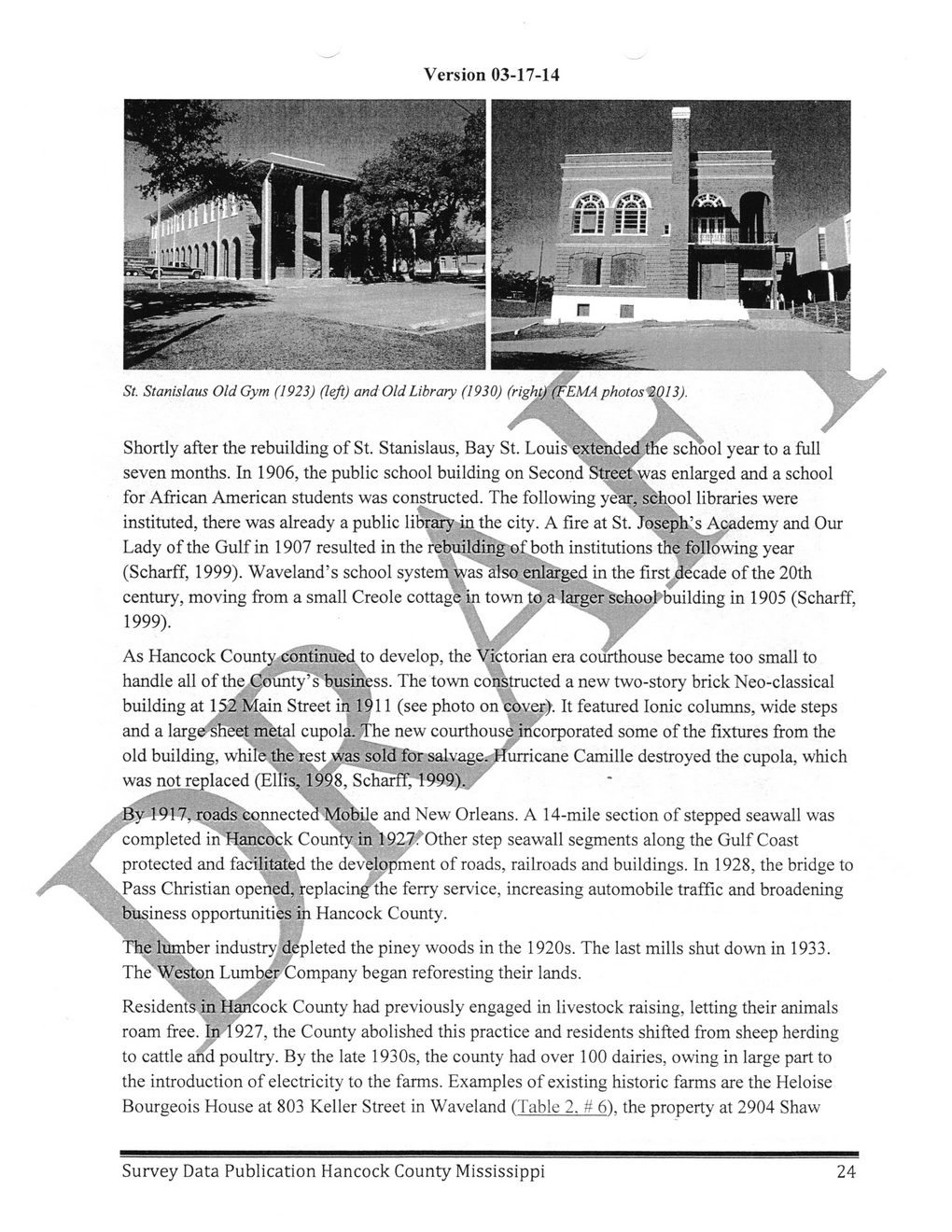This text was obtained via automated optical character recognition.
It has not been edited and may therefore contain several errors.
Version 03-17-14 Shortly after the rebuilding of St. Stanislaus, Bay St. Louis'extende^me school year to a full seven months. In 1906, the public school building on Second Street was enlarged and a school for African American students was constructed. The following year, school libraries were instituted, there was already a public library in the city. A fire at St. Joseph!s Academy and Our Lady of the Gulf in 1907 resulted in the rebuilding of both institutions the following year (Scharff, 1999). Waveland’s school system vyas also enlarged in the first decade of the 20th century, moving from a small Creole cottage in town to a larger school building in 1905 (Scharff, 1999). \ . P As Hancock County continued to develop, the Victorian era courthouse became too small to handle all of the^ County’s business. The town constructed a new two-story brick Neo-classical building at 152 Main Street in 1911 (see photo on cover). It featured Ionic columns, wide steps and a large- sheet metal cupola. The new courthouse incorporated some of the fixtures from the old building, while the rest was sold for salvage. Hurricane Camille destroyed the cupola, which was not replaced (Ellis, 1998, Scharff, 1999)., ' roads connected Mobile and New Orleans. A 14-mile section of stepped seawall was f■ Tl,"* . '. y“ completed in Hancock County in 1927.'Other step seawall segments along the Gulf Coast protected and facilitated the development of roads, railroads and buildings. In 1928, the bridge to Pass Christian opened, replacing the ferry service, increasing automobile traffic and broadening business opportunities in Hancock County. The lumber industry depleted the piney woods in the 1920s. The last mills shut down in 1933. The’ Weston Lumber Company began reforesting their lands. Residents in Hanfcock County had previously engaged in livestock raising, letting their animals roam free. In 1927, the County abolished this practice and residents shifted from sheep herding to cattle and poultry. By the late 1930s, the county had over 100 dairies, owing in large part to the introduction of electricity to the farms. Examples of existing historic farms are the Heloise Bourgeois House at 803 Keller Street in Waveland (Table 2. # 6~), the property at 2904 Shaw Survey Data Publication Hancock County Mississippi 24

Hancock County History and Archeology Survey-Publication-Data-2014-(25)